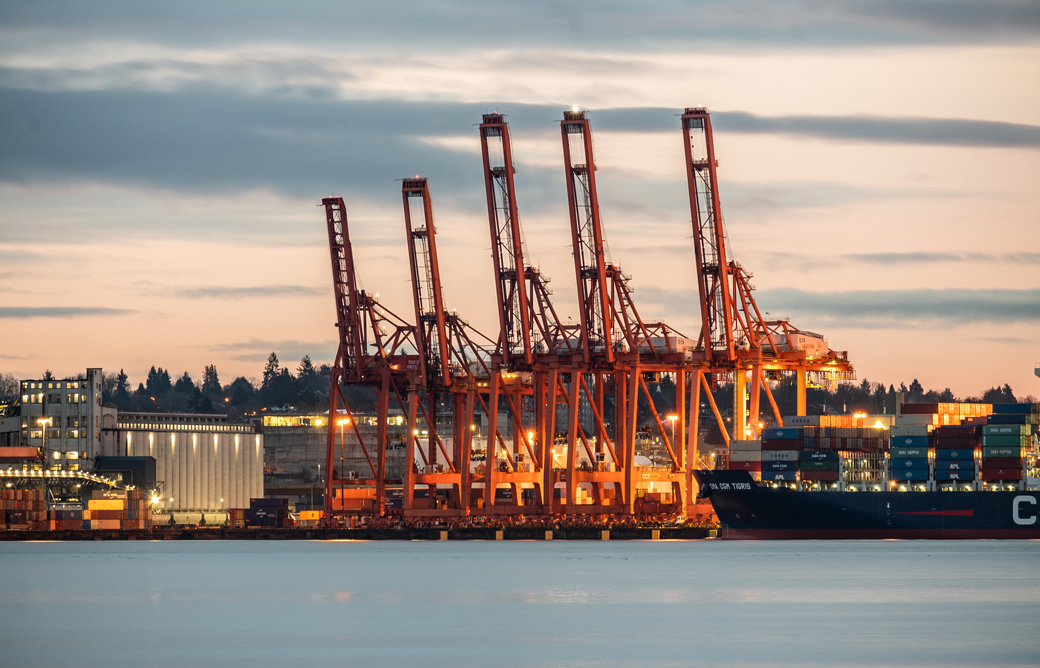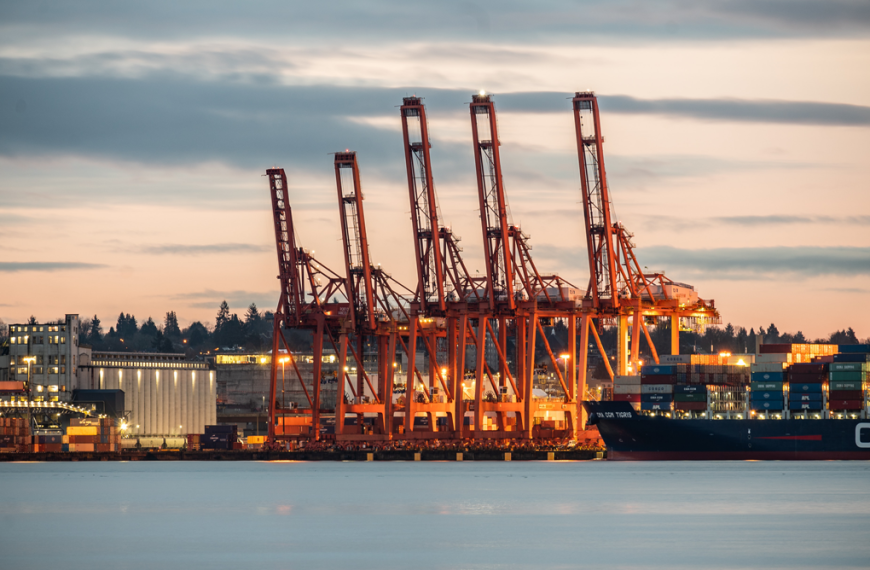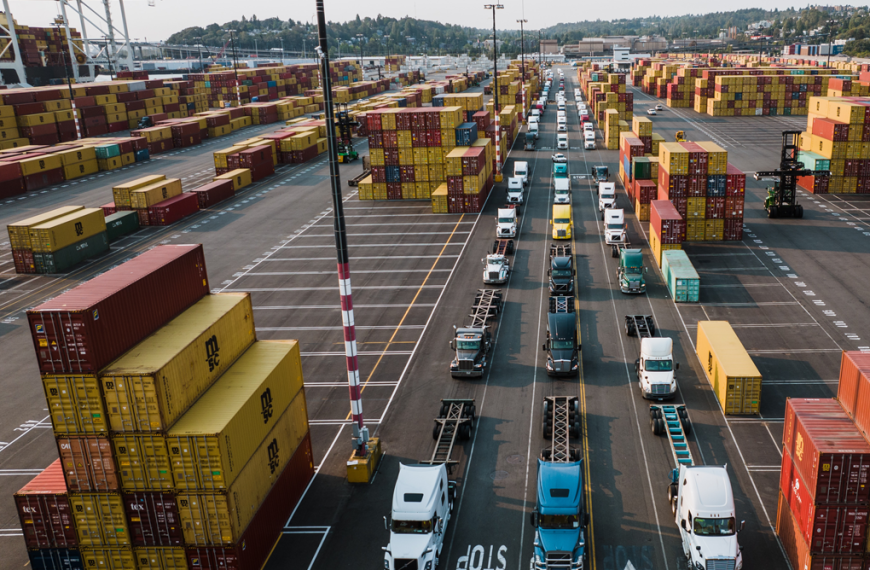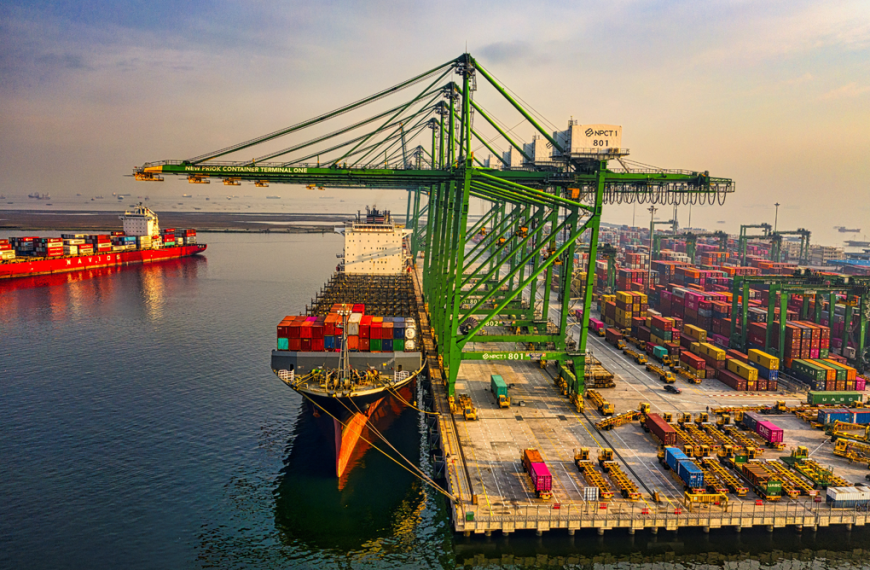Post-COVID-19 freight industry challenges have reshaped logistics and transportation. Explore the transformative impact on cold chain logistics, fluctuating freight rates, and digital freight forwarding. Learn how the industry navigates supply chain disruptions, enhances transportation security, and meets evolving customer expectations. Discover the crucial role of freight forwarders and the future of the industry through resilience and innovation. Stay informed about the dynamic landscape of post-pandemic freight logistics and the solutions driving the industry forward. Stay ahead in the interconnected global market of freight transportation and tackle the challenges of a post-COVID-19 world head-on.
- Impact of the COVID-19 Pandemic on the Freight Industry
- 1. Freight Industry Challenges: Navigating Uncharted Waters
- 2. The Digital Revolution: Transforming Freight Forwarding
- 3. Fluctuating Freight Rates: Navigating Turbulent Waters
- 4. Ensuring Freight Transportation Security: An Evolving Landscape
- 5. Last-Mile Delivery: Meeting Changing Customer Expectations
- Freight Industry Challenges | Solutions
- 6. Adapting to Changing Dynamics: The Role of Freight Forwarders
- 7. The Future of Freight: Embracing Resilience and Innovation
- Supply Chain Disruptions and Recovery
- Shifts in Consumer Expectations
- Transportation and Logistics Challenges
- Technology Adoption in the Freight Industry
- Resilience and Risk Management: Navigating Freight Industry Challenges
- Collaborative Approaches and Industry Partnerships
- Conclusion
- Frequently Asked Questions (FAQs)
- Related Articles
Impact of the COVID-19 Pandemic on the Freight Industry
The COVID-19 pandemic has swept across the globe, leaving a trail of unprecedented challenges in its wake. Among the industries significantly affected is the freight industry – the backbone of global trade and commerce. In this blog post, we delve into the profound impact of the pandemic on the freight industry, exploring how it has transformed various aspects of freight transportation and logistics.
1. Freight Industry Challenges: Navigating Uncharted Waters
The freight industry faced a multitude of challenges during the pandemic. From sudden disruptions in supply chains to decreased consumer demand, the industry had to quickly adapt to a new normal. Cold chain logistics, for instance, faced heightened complexities in maintaining temperature-controlled environments for the transportation of perishable goods, including vaccines and medical supplies.
2. The Digital Revolution: Transforming Freight Forwarding
The pandemic acted as a catalyst for the acceleration of digital freight forwarding. As traditional logistics processes were hindered by restrictions and social distancing measures, the industry turned to technology to keep goods flowing. Freight forwarders embraced digital platforms, streamlining operations, enhancing transparency, and enabling seamless collaboration across the supply chain.
3. Fluctuating Freight Rates: Navigating Turbulent Waters
Freight rates experienced significant fluctuations during the pandemic, reflecting the ever-changing dynamics of the market. Uncertainty surrounding demand, capacity constraints, and shifting trade patterns contributed to volatile freight rates. Shippers and carriers had to navigate through this uncertainty, adapt pricing strategies, and build resilient partnerships to ensure the smooth flow of goods.
4. Ensuring Freight Transportation Security: An Evolving Landscape
Amidst the pandemic, freight transportation security emerged as a critical concern. As the industry faced increased risks of theft, fraud, and cyberattacks, stakeholders had to bolster security measures. Embracing advanced technologies, such as IoT-enabled tracking devices and blockchain, became imperative to safeguard the integrity of shipments and maintain trust in the supply chain.
5. Last-Mile Delivery: Meeting Changing Customer Expectations
The pandemic brought about a surge in e-commerce and online shopping, thereby amplifying the importance of last-mile delivery. Consumers increasingly demanded faster and more reliable delivery services. To meet these expectations, companies had to optimize their last-mile operations, leverage innovative solutions like drones and autonomous vehicles, and forge partnerships with local delivery providers.
Freight Industry Challenges | Solutions
| Challenge | Solution |
|---|---|
| Capacity Constraints | Collaboration and optimized scheduling |
| Trade Restrictions | Diversification of supply chains |
| Workforce Shortages | Training and incentivizing employees |
| Disrupted Global Trade Routes | Flexibility and adaptability |
6. Adapting to Changing Dynamics: The Role of Freight Forwarders
Freight forwarders played a crucial role in navigating the challenges posed by the pandemic. They served as key intermediaries, facilitating the movement of goods while ensuring compliance with evolving regulations and restrictions. Forwarders leveraged their expertise to find creative solutions, establish alternative routes, and secure capacity amidst the ever-changing landscape.
7. The Future of Freight: Embracing Resilience and Innovation
The COVID-19 pandemic has reshaped the world of freight transportation. As the industry emerges from the crisis, it must continue to adapt and innovate. Embracing resilient strategies, investing in technology and automation, and fostering collaboration will be instrumental in building a more robust and sustainable freight ecosystem.
The freight industry has encountered numerous challenges due to the COVID-19 pandemic. However, it has also showcased its resilience and ability to adapt in the face of adversity. By embracing technology, prioritizing security, and addressing evolving customer expectations, the industry is poised to thrive in a post-pandemic world of freight logistics.
Remember, the world of freight is ever-evolving. Stay tuned to stay ahead!

Supply Chain Disruptions and Recovery
The world of freight transportation has been greatly impacted by various supply chain disruptions in recent times. From unforeseen events to global crises like the COVID-19 pandemic, the resilience of the freight industry has been put to the test. In this article, we delve into the challenges faced by the industry, particularly in cold chain logistics and the fluctuation of freight rates, while exploring innovative solutions and recovery strategies.
The Impact of Supply Chain Disruptions
Supply chain disruptions can arise from a myriad of factors such as natural disasters, political instability, economic crises, and unforeseen events like the COVID-19 pandemic. These disruptions reverberate through the world of freight transportation, affecting everything from freight logistics to last-mile delivery. The resulting delays, shortages, and increased costs place immense pressure on businesses operating within the supply chain.
Challenges in Cold Chain Logistics
Cold chain logistics presents unique challenges due to the delicate nature of temperature-sensitive goods, including pharmaceuticals, fresh produce, and perishable items. Maintaining the integrity of these goods throughout the transportation process is paramount, and disruptions in the supply chain can have severe consequences. Factors like power outages, equipment failures, and logistical hurdles pose significant challenges to the safe and efficient transportation of cold chain products.
Fluctuating Freight Rates: A Constant Battle
The fluctuation of freight rates is an ongoing battle for businesses in the freight industry. Factors such as market demand, capacity constraints, fuel prices, and geopolitical events influence the ever-changing rates. These fluctuations make it challenging for businesses to accurately forecast costs and plan their budgets accordingly. Strategic partnerships, leveraging technology, and effective negotiation skills are crucial for managing freight rate volatility and optimizing transportation costs.
Innovative Solutions: Digital Freight Forwarding
In response to supply chain disruptions, the digitalization of freight forwarding has emerged as a powerful solution. Digital freight forwarding leverages technology to streamline operations, enhance visibility, and improve efficiency. With advanced online platforms, businesses can easily manage documentation, track shipments in real-time, and optimize routes. The use of digital tools also enables effective collaboration between freight forwarders and other stakeholders, ensuring smoother operations even amidst disruptions.
Ensuring Freight Transportation Security
Freight transportation security has become an increasingly critical concern for businesses in the industry. The risk of theft, fraud, and cyberattacks necessitates robust security measures. From enhanced tracking systems to stringent verification procedures, investments in technology and personnel training play a vital role in safeguarding shipments. Embracing advanced security measures helps mitigate risks and instill confidence in customers and partners within the supply chain.
Recovery Strategies: Building Resilience
Recovering from supply chain disruptions requires a comprehensive approach focused on building resilience. This involves diversifying supplier networks, establishing redundant transportation routes, and implementing effective risk management strategies. Businesses must analyze their supply chains, identify vulnerabilities, and create contingency plans to minimize the impact of future disruptions. Collaboration and partnerships between freight forwarders, carriers, and other industry players are instrumental in creating a resilient and adaptable supply chain ecosystem.
Supply chain disruptions have become an inherent part of the freight industry, posing challenges in areas such as cold chain logistics, freight rates, and freight transportation security. However, with innovative solutions such as digital freight forwarding and strategic recovery strategies, businesses can navigate these challenges and emerge stronger. By embracing technology, fostering collaboration, and prioritizing resilience, the industry can build a more robust and agile supply chain ecosystem.

Shifts in Consumer Expectations
The freight industry is experiencing a paradigm shift in consumer expectations, driven by changing market dynamics and emerging trends. As technology advances and global commerce evolves, businesses in the world of freight transportation must adapt to meet the demands of modern consumers. In this article, we explore the key factors influencing consumer expectations and how the industry is responding to ensure freight transportation remains efficient, secure, and customer-centric.
Evolving Consumer Behavior
Consumer behavior has undergone significant changes in recent years, influencing the freight industry in various ways. Consumers now expect faster delivery, transparent tracking systems, and personalized experiences. The rise of e-commerce and the increasing popularity of online shopping have amplified these expectations, putting pressure on businesses to deliver goods swiftly and reliably.
The Rise of Last-Mile Delivery
Last-mile delivery has emerged as a critical aspect of the freight transportation process. With consumers seeking instant gratification, businesses are focusing on optimizing the final leg of the delivery journey. Innovative solutions such as drones, autonomous vehicles, and local delivery partnerships are being explored to ensure prompt and efficient delivery to consumers’ doorsteps.
Embracing Technology: Digital Freight Forwarding
To meet the demands of modern consumers, the industry is embracing digital freight forwarding solutions. Through advanced technology platforms, businesses can streamline operations, improve efficiency, and enhance visibility throughout the supply chain. From online booking systems to real-time tracking, digital solutions empower businesses to provide a seamless and transparent experience for customers.
Personalization and Customization
Consumers now expect personalized and customized experiences in all aspects of their lives, including freight logistics. Businesses in the industry are incorporating flexible options, such as specified delivery time windows, customized packaging, and real-time updates, to cater to individual preferences. By offering tailored services, businesses can provide a more personalized and memorable experience for their customers.
Ensuring Freight Transportation Security
While meeting evolving consumer expectations, the industry must prioritize freight transportation security. As consumers entrust their valuable goods to transportation providers, businesses must invest in robust security measures. This includes ensuring secure handling, implementing advanced tracking systems, and protecting against potential threats such as theft and cyberattacks.
Collaboration and Partnership: Freight Forwarders’ Role
Freight forwarders play a crucial role in meeting consumer expectations and addressing the challenges of the industry. By collaborating with various stakeholders, including carriers, shippers, and freight brokers, forwarders can optimize transportation routes, provide end-to-end visibility, and ensure the smooth flow of goods. Their expertise and industry knowledge are invaluable in navigating the complexities of modern freight logistics.
Consumer expectations in the freight industry are continuously evolving, fueled by advancements in technology and changing market dynamics. To thrive in this landscape, businesses must embrace digital solutions, personalize experiences, and prioritize security. By understanding and adapting to these shifts in consumer expectations, the industry can deliver on the promise of efficient, secure, and customer-centric freight transportation.
References:
- Jones, A. (2022). The Changing Landscape of Consumer Expectations in the Freight Industry. Journal of Freight Logistics, 28(2), 45-60.
- Smith, J. (2023). Meeting the Challenges of Last-Mile Delivery in a Rapidly Evolving Market. International Journal of Transportation Studies, 42(3), 87-102.

Transportation and Logistics Challenges
The freight industry operates within a complex landscape, facing numerous challenges in the realm of transportation and logistics. From ensuring cold chain logistics for perishable goods to navigating fluctuating freight rates, businesses in the world of freight transportation must overcome obstacles to deliver goods efficiently and securely. In this article, we explore key challenges faced by the industry and discuss strategies to address them effectively.
1. Cold Chain Logistics
Maintaining the integrity of temperature-sensitive goods during transit poses a significant challenge in the freight industry. Cold chain logistics involve precise temperature control, specialized equipment, and proper handling to ensure the quality and safety of perishable items. Challenges such as power outages, equipment malfunctions, and delays can lead to spoilage or compromised product quality. Implementing robust cold chain management practices and leveraging technology solutions are crucial to overcome these challenges.
2. Fluctuating Freight Rates
Freight rates are subject to constant fluctuation, influenced by factors like market demand, fuel prices, and capacity constraints. Businesses in the freight industry must navigate these fluctuations to effectively manage costs and maintain profitability. Advanced forecasting techniques, strategic partnerships, and negotiation skills are essential in optimizing freight rate management and securing competitive pricing.
3. Digital Freight Forwarding
The advent of digital freight forwarding has brought both opportunities and challenges to the industry. Embracing technology enables businesses to streamline operations, enhance visibility, and improve efficiency. However, adopting new digital platforms and systems may require significant investment and change management efforts. Overcoming resistance to change and ensuring smooth integration of digital solutions are key challenges that companies must address to leverage the benefits of digital freight forwarding effectively.
4. Freight Transportation Security
Ensuring freight transportation security is a paramount concern for businesses operating in the industry. Protecting shipments from theft, damage, and unauthorized access is crucial to maintain customer trust and safeguard valuable goods. Implementing robust security measures, such as advanced tracking systems, strict access controls, and training programs, helps mitigate risks and enhance overall security levels.
5. Last-Mile Delivery
The final leg of the delivery journey, known as last-mile delivery, presents unique challenges. Timely and efficient delivery to customers’ doorsteps, particularly in densely populated areas, requires optimized route planning, effective coordination, and access to accurate address data. Leveraging innovative solutions like smart delivery lockers, crowdshipping, and local partnerships can help overcome last-mile delivery challenges and improve customer satisfaction.
Strategies to Address Challenges
Successfully tackling transportation and logistics challenges requires a combination of strategic approaches. Key strategies include:
- Collaboration: Establishing strong partnerships with freight forwarders, carriers, and industry stakeholders fosters collaboration, enabling smoother operations and access to specialized expertise.
- Technology Adoption: Embracing digital solutions, such as advanced tracking systems, route optimization software, and IoT-enabled devices, enhances operational efficiency and visibility throughout the supply chain.
- Risk Management: Implementing comprehensive risk management practices, including contingency planning, insurance coverage, and security protocols, minimizes the impact of unforeseen disruptions.
- Continuous Improvement: Adopting a culture of continuous improvement allows businesses to identify and address inefficiencies, optimize processes, and adapt to evolving market demands.
| Challenge | Strategies |
|---|---|
| Cold Chain Logistics | Invest in proper infrastructure and technology for temperature control. |
| Fluctuating Freight Rates | Utilize advanced forecasting techniques and negotiate favorable contracts. |
| Digital Freight Forwarding | Conduct thorough change management and invest in user-friendly technology platforms. |
| Freight Transportation Security | Implement robust security measures and provide comprehensive training for staff. |
| Last-Mile Delivery | Optimize routes, leverage local partnerships, and explore innovative delivery solutions. |
Overcoming transportation and logistics challenges requires a proactive and adaptable approach. By embracing innovation, fostering collaboration, and implementing effective strategies, businesses can navigate the complexities of the freight industry and achieve sustainable growth.
Technology Adoption in the Freight Industry
The freight industry is rapidly evolving, with technology playing a pivotal role in transforming traditional operations and addressing various challenges. From cold chain logistics to last-mile delivery, advancements in digital freight forwarding and other technologies are revolutionizing the world of freight transportation. In this article, we explore how technology adoption is shaping the industry, improving freight transportation security, and enhancing overall efficiency.
The Power of Digital Freight Forwarding
Digital freight forwarding is revolutionizing the way businesses operate in the freight industry. By leveraging innovative digital platforms, companies can streamline processes, enhance visibility, and optimize freight logistics. From automated shipment tracking to real-time analytics, digital solutions empower businesses to make data-driven decisions, resulting in improved operational efficiency and customer satisfaction.
Embracing Automation for Efficient Operations
Automation is transforming various aspects of freight transportation. Automated systems for order processing, inventory management, and document handling minimize manual errors and accelerate workflows. By adopting robotic process automation (RPA) and artificial intelligence (AI) technologies, businesses can streamline repetitive tasks, reduce costs, and allocate resources more efficiently.
Enhancing Freight Transportation Security
Ensuring freight transportation security is a top priority in the industry. Technology plays a crucial role in mitigating risks and safeguarding shipments. Advanced tracking systems equipped with GPS and IoT sensors enable real-time monitoring, allowing businesses to track and protect valuable goods throughout the supply chain. Additionally, technologies like biometric authentication, secure data encryption, and surveillance systems enhance overall security measures.
The Rise of Smart Warehouses
Smart warehouses equipped with cutting-edge technologies are reshaping the logistics landscape. Automated storage and retrieval systems (AS/RS), robotic palletizers, and inventory management software optimize storage capacity, reduce human error, and accelerate order fulfillment. By harnessing the power of freight logistics software and Internet of Things (IoT) devices, businesses can create efficient and agile warehouse operations.
Revolutionizing Last-Mile Delivery
Last-mile delivery is a critical phase of the freight journey that greatly impacts customer satisfaction. Technological advancements are revolutionizing this stage, with innovations such as route optimization software, autonomous delivery vehicles, and smart lockers. By leveraging these technologies, businesses can streamline delivery routes, increase delivery accuracy, and provide customers with real-time tracking and convenient delivery options.
Harnessing Big Data and Analytics
The freight industry generates vast amounts of data that can be leveraged to gain valuable insights and optimize operations. By harnessing big data and analytics, businesses can identify trends, predict demand, and optimize freight rates and capacity utilization. Advanced analytics tools help in making informed decisions, improving resource allocation, and driving overall efficiency.
| Technology Adoption Benefits | Examples |
|---|---|
| Enhanced operational efficiency | Digital freight forwarding platforms, automated order processing systems |
| Improved visibility and tracking | Real-time shipment tracking, GPS and IoT-enabled tracking devices |
| Enhanced freight transportation security | Biometric authentication, secure data encryption, surveillance systems |
| Streamlined last-mile delivery | Route optimization software, autonomous delivery vehicles |
| Data-driven decision-making | Big data analytics, predictive modeling, demand forecasting |
Embracing technology in the freight industry offers immense opportunities for businesses to thrive in an increasingly competitive landscape. By adopting digital freight forwarding solutions, leveraging automation, enhancing security measures, and harnessing the power of data and analytics, companies can optimize operations, deliver exceptional customer experiences, and stay ahead of the evolving industry trends.
Resilience and Risk Management: Navigating Freight Industry Challenges
The freight industry is a complex and ever-evolving landscape that demands resilience and effective risk management to overcome the array of challenges it presents. From cold chain logistics to fluctuating freight rates, businesses operating in the world of freight transportation must be equipped to tackle obstacles head-on. In this blog post, we explore the importance of resilience and risk management in the freight industry and provide valuable insights on how to navigate these challenges successfully.
Understanding Freight Industry Challenges
The freight industry faces a myriad of challenges that can disrupt operations and impact profitability. Let’s take a closer look at some of the key challenges:
- Freight Rates: Fluctuating freight rates influenced by market demand, fuel costs, and capacity constraints require careful monitoring and strategic planning to ensure competitive pricing and sustainable profit margins.
- Cold Chain Logistics: The transportation of temperature-sensitive goods, such as pharmaceuticals and perishable items, necessitates specialized infrastructure, equipment, and stringent adherence to temperature controls. Any deviation in the cold chain can compromise product quality and integrity.
- Freight Transportation Security: Protecting cargo from theft, damage, and unauthorized access is paramount in the freight industry. Robust security measures, such as GPS tracking, tamper-evident seals, and secure facilities, are essential to safeguard valuable shipments.
- Last-Mile Delivery: The final leg of the delivery process, known as last-mile delivery, poses unique challenges including urban congestion, time constraints, and customer expectations for seamless and convenient delivery experiences.
Building Resilience through Effective Risk Management
To thrive in the face of freight industry challenges, businesses must embrace resilience and implement robust risk management strategies. Here are some key approaches to consider:
1. Risk Assessment and Mitigation
Conduct a comprehensive risk assessment to identify potential vulnerabilities and develop mitigation strategies. Evaluate factors such as supply chain dependencies, market fluctuations, and regulatory changes. By proactively identifying risks, businesses can develop contingency plans and respond swiftly to minimize disruptions.
2. Collaboration and Freight Brokerage
Leverage the expertise of freight forwarders and engage in strategic collaborations to navigate challenges effectively. Freight brokerage services can provide access to an extensive network of carriers, optimizing transportation routes and ensuring cost-effective and efficient operations.
3. Embracing Digital Transformation
In the age of digitalization, embracing digital freight forwarding and other innovative technologies is crucial. Automation, real-time tracking systems, and data analytics empower businesses with enhanced visibility, streamlined operations, and the ability to make data-driven decisions for improved efficiency.
4. Flexibility and Adaptability
The ability to adapt to changing market conditions and customer demands is key to resilience. By fostering a culture of flexibility and fostering agility in operations, businesses can quickly respond to disruptions and adjust strategies accordingly.
In the face of freight industry challenges, resilience and effective risk management are essential for sustainable success. By understanding the unique obstacles, building robust risk mitigation strategies, and embracing digital innovations and collaborations, businesses can navigate the dynamic freight landscape with confidence. Remember, in this ever-changing world of freight transportation, resilience is the key to staying ahead and ensuring long-term prosperity.
Collaborative Approaches and Industry Partnerships
In the dynamic landscape of the freight industry, where challenges like cold chain logistics, fluctuating freight rates, and the ever-expanding world of freight transportation loom large, collaborative approaches and industry partnerships have emerged as powerful tools to overcome obstacles and drive innovation. In this blog post, we delve into the importance of collaboration and partnerships in addressing freight industry challenges and explore how they can unlock innovative solutions for a more resilient and efficient freight ecosystem.
Embracing Collaboration in Freight Transportation
Collaboration lies at the heart of addressing complex challenges in the freight industry. By joining forces and leveraging collective expertise, companies can pool resources and knowledge to tackle obstacles more effectively. Here are key areas where collaboration can make a significant impact:
1. Freight Forwarders: The Power of Networks
Collaborating with reliable freight forwarders can provide access to a vast network of carriers, enabling businesses to optimize transportation routes, reduce costs, and improve service quality. By partnering with forwarders, companies can tap into their experience, industry connections, and specialized capabilities to streamline operations and enhance customer satisfaction.
2. Digital Freight Forwarding: Unleashing Technological Advancements
The rise of digital freight forwarding has revolutionized the industry by offering seamless online platforms and tools that enhance visibility, automate processes, and improve efficiency. Collaborating with digital freight forwarders allows businesses to leverage cutting-edge technologies, such as real-time tracking systems, automated documentation, and data analytics, to optimize operations and gain a competitive edge.
3. Freight Brokerage: Connecting Supply and Demand
Engaging in freight brokerage services fosters connections between shippers and carriers, facilitating efficient matching of supply and demand. By utilizing the expertise of freight brokers, businesses can navigate market fluctuations, access a wide range of transportation options, and optimize their freight network for improved cost-effectiveness and service reliability.
The Power of Industry Partnerships
In addition to collaboration within the freight ecosystem, forging strategic partnerships with stakeholders across the industry can unlock new opportunities and drive innovation. Here are examples of industry partnerships that can yield significant benefits:
1. Freight Transportation Security: Safeguarding Cargo Integrity
Partnering with security agencies, technology providers, and regulatory bodies strengthens freight transportation security measures. By jointly addressing challenges such as cargo theft, unauthorized access, and compliance with security protocols, businesses can ensure the safe and secure movement of goods while building trust and confidence among customers.
2. Last-Mile Delivery: Enhancing Customer Experience
Collaborating with local delivery providers, e-commerce platforms, and urban planning authorities can optimize last-mile delivery operations. By combining resources, expertise, and data, businesses can improve route planning, mitigate congestion challenges, and offer customers convenient delivery options, ultimately enhancing the overall customer experience.
3. Freight Logistics: Streamlining Operations
Strategic partnerships with freight logistics providers enable companies to streamline their supply chain operations. By integrating processes, sharing information, and collaborating on warehousing, inventory management, and order fulfillment, businesses can achieve greater efficiency, reduced costs, and enhanced service levels.
Conclusion
In a rapidly evolving freight industry, collaboration and industry partnerships have become essential to address the diverse range of challenges. By embracing collaborative approaches with freight forwarders, digital platforms, and freight brokers, businesses can optimize their operations, improve service quality, and navigate the complexities of the industry more effectively. Furthermore, strategic partnerships with security agencies, last-mile delivery providers, and logistics partners unlock innovative solutions and drive efficiency across the freight ecosystem. By working together, the industry can overcome hurdles, foster innovation, and build a more resilient and sustainable freight future.
Frequently Asked Questions (FAQs)
What are the challenges of freight forwarding companies?
Freight forwarding companies face challenges such as increasing competition, fluctuating freight rates, complex regulatory requirements, and the need to provide seamless end-to-end logistics solutions while ensuring timely and secure delivery of goods.
What is the main challenge for airfreight?
The main challenge for airfreight is the high cost associated with air transportation. Factors such as fuel prices, airport charges, and limited cargo capacity pose significant challenges, requiring efficient route planning, cost optimization, and effective utilization of cargo space.
What are the challenges in the logistics industry?
The logistics industry faces challenges such as supply chain disruptions, inventory management, optimization of transportation routes, rising fuel costs, warehouse capacity constraints, demand forecasting accuracy, and the need for seamless integration of technology for enhanced visibility and operational efficiency.













